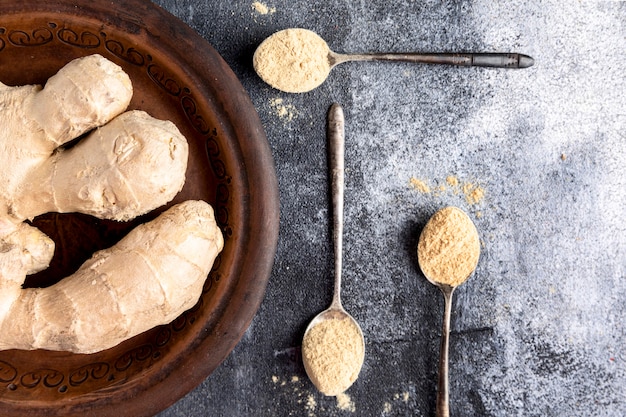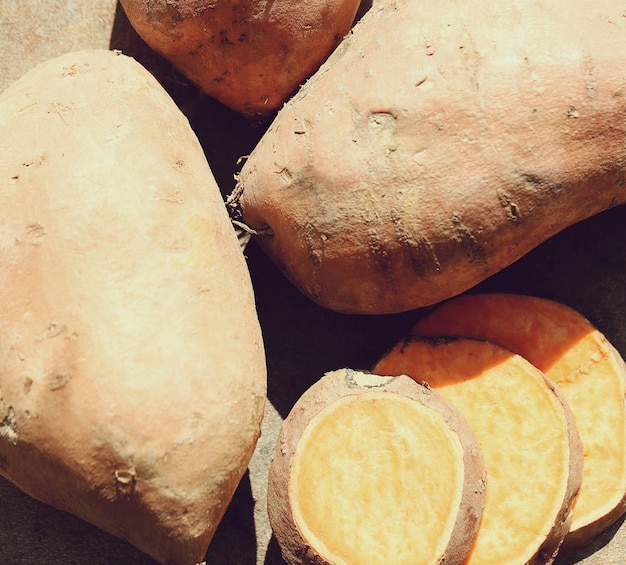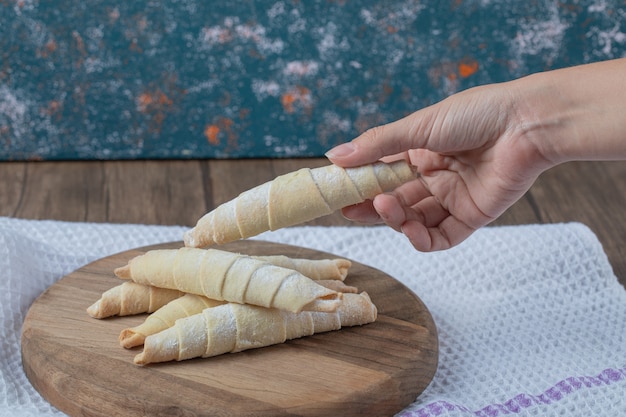Let's talk about yams! Often confused with sweet potatoes, these starchy tubers are a true culinary gem, beloved for their earthy flavour and incredible versatility. From my own experience, yams have always been a favourite in my kitchen, and I'm excited to share everything I've learned about them with you. Whether you're craving something sweet or savoury, yams can be transformed into a symphony of delicious dishes. So, grab your apron, and let's embark on a culinary adventure together.
(Part 1) Yams 101: Getting to Know Your Yam

Identifying Your Yam
The first step to mastering yams is understanding what makes them unique. You'll want to avoid mistaking them for sweet potatoes, which are often sold interchangeably but are actually quite different. Yams have a distinct rough, brown, and sometimes scaly skin. This contrasts sharply with the smooth skin of a sweet potato, which can range in colour from pale to deep red or even purple. The flesh of a yam can also vary in colour, from white and cream to yellow, pink, or even purple, a distinctive characteristic that distinguishes it from the typically orange sweet potato flesh.
It's essential to pick yams that feel firm to the touch, free from soft spots or blemishes. If you're unsure, don't hesitate to ask your local greengrocer for guidance – they're a wealth of knowledge!
Choosing the Right Yam for Your Dish
The world of yams is diverse, with various varieties, each possessing unique characteristics that lend themselves to different culinary applications. Here's a guide to some of the most popular varieties:
- White Yam (Dioscorea alata): The most common type, white yams are known for their white flesh and starchy texture, making them ideal for dishes like creamy yam puree, the traditional West African fufu, or simply boiled yams as a side dish.
- Purple Yam (Dioscorea alata): With its striking vibrant purple flesh, the purple yam boasts a mildly sweet flavour. This makes it a popular choice for desserts, smoothies, and even as a natural food colouring. Its vibrant hue adds a touch of colour and beauty to any dish.
- Chinese Yam (Dioscorea polystachya): Characterised by its creamy white flesh, Chinese yam stands out for its slightly crunchy texture and nutty flavour. It’s a versatile ingredient in stir-fries, soups, and salads, adding a unique textural element and subtle flavour.
- African Yam Bean (Sphenostylis stenocarpa): While less commonly found, this variety is a fantastic source of protein and fibre. It can be cooked like other beans, adding a hearty dimension to soups and stews, or even ground into flour for a unique culinary twist.
(Part 2) Preparing Your Yam: From Storage to Peeling

Storing Yams
Once you've got your yams home, proper storage is key to preserving their freshness and flavour. A cool, dry place like a pantry or root cellar is ideal. Avoid storing them in the refrigerator, as the cold can cause them to become soft and mushy. For longer storage, a cool, dark, and well-ventilated space can keep your yams fresh for several months.
Peeling Your Yam
Peeling yams can be a bit tricky due to their tough skin. You can use a sharp knife or a vegetable peeler, but be prepared for a bit of resistance. I've discovered a little trick: boiling the yams for a few minutes softens the skin, making peeling much easier. Once peeled, be sure to discard any fibrous strings that might be attached, ensuring a smooth and delicious result.
(Part 3) Cooking Yams: The Essential Techniques

Boiling Yams
Boiling is the simplest and most traditional way to cook yams. This method allows the natural sweetness and flavour of the yam to shine through, making it perfect for simple dishes or as a base for other recipes. Just add them to a pot of boiling water, cover the pot, and let them cook until tender. The cooking time will depend on the size of the yams, generally taking about 20-30 minutes. Once cooked, drain them and allow them to cool before using.
Roasting Yams
Roasting transforms yams, bringing out a wonderfully sweet and caramelized flavour. Preheat your oven to 350°F (175°C) and line a baking sheet with parchment paper. Peel and chop the yams into bite-sized pieces. Toss them with olive oil, salt, and pepper, and spread them in a single layer on the baking sheet. Roast for about 40-45 minutes, turning them halfway through, until they are tender and slightly golden brown. The result is a delicious and visually appealing side dish.
Frying Yams
Frying adds a delightful crispy exterior to yams while keeping their insides tender. Slice the peeled yams into thin rounds or wedges. Heat some oil in a frying pan over medium heat and fry the yams until golden brown and crisp. Season with salt and pepper to taste. This method is perfect for adding a satisfying crunch to your meals.
Baking Yams
Baking yams offers a simple way to create a sweet and fluffy side dish. Preheat your oven to 350°F (175°C). Wrap peeled and chopped yams in aluminum foil, and place them on a baking sheet. Bake for about 45-60 minutes, until the yams are soft and cooked through. The foil traps moisture, ensuring a tender and succulent result.
Microwaving Yams
For a quick and convenient option, microwaving yams is a viable solution. Peel and cut them into smaller pieces. Place them in a microwave-safe dish, add a few tablespoons of water, cover with plastic wrap, and microwave on high for about 5-7 minutes, or until tender. Be cautious as the steam can be hot.
(Part 4) Sweet yam recipes: From Desserts to Drinks
Yam Puree
This is a classic and incredibly versatile recipe that can be used as a base for a multitude of dishes. Boil yams until tender, then mash them with a fork or food processor until smooth. Add a bit of butter, milk, and sugar for a sweet and creamy puree. You can also add cinnamon, nutmeg, or vanilla extract for extra flavour. This puree is perfect for desserts, smoothies, or even as a topping for pancakes or waffles.
Yam Cake
Yam cake is a beloved dessert in many Asian cuisines. It's made with a blend of yam puree, sugar, flour, and eggs, creating a moist and flavorful cake. It can be steamed or baked, and often comes with a topping of candied fruits or nuts. You can find variations with different flavours, like coconut or pandan, offering a delightful range of taste experiences.
Yam Smoothie
For a refreshing and nutritious way to enjoy yams, try a yam smoothie. Simply blend boiled yam puree with your favourite fruits, milk, and yogurt. You can add other ingredients like spinach, chia seeds, or nut butter for extra nutrients and flavour. It's a perfect way to start your day or refuel after a workout.
Yam Jam
If you're seeking a unique and delicious spread for toast or crackers, consider making yam jam. It's a simple process that involves simmering mashed yams with sugar and lemon juice until it reaches a jam-like consistency. Experiment with different spices, like ginger or cinnamon, to create your own unique flavour combinations. The result is a sweet and tangy spread that will add a touch of sophistication to your breakfast or snacks.
(Part 5) Savoury Yam Recipes: From Soups to Salads
Yam Soup
Yam soup is a comforting and nourishing dish, perfect for a chilly evening. Start by boiling chopped yams until tender. Then, add your favourite vegetables, like carrots, celery, and onions. Season with salt, pepper, and herbs, and simmer for a few more minutes until the vegetables are cooked through. You can thicken the soup with a little bit of cornstarch or flour, creating a creamy and satisfying broth.
Yam Fritters
Yam fritters are a delicious and crispy snack or side dish, offering a delightful combination of textures and flavours. Grate boiled yams, then mix them with flour, eggs, and spices. Form the mixture into small patties and fry them in hot oil until golden brown. Serve them with your favourite dipping sauce, like a tangy yogurt sauce or a sweet and spicy chili sauce. They're perfect for parties, potlucks, or as a satisfying appetizer.
Yam Salad
A yam salad is a fresh and healthy way to enjoy this versatile tuber, adding a unique twist to your salad repertoire. Cube boiled yams and add them to a salad with your favourite greens, vegetables, and a light dressing. I love to add things like crunchy cucumbers, juicy tomatoes, and a tangy vinaigrette. The combination of textures and flavours creates a vibrant and satisfying salad experience.
Yam and Coconut Curry
This is a flavourful and satisfying dish that's perfect for a warm meal, bringing the warmth of the tropics to your table. Sauté onions, garlic, and ginger in coconut oil until fragrant. Add diced yams, coconut milk, curry powder, and your favourite spices. Simmer until the yams are cooked through and the sauce has thickened. Serve with rice or naan bread, creating a symphony of flavours and textures.
(Part 6) The nutritional benefits of yams
Not only are yams delicious, but they are also packed with nutritional benefits, making them a healthy addition to your diet. They are a good source of:
- Vitamin C: This important vitamin supports immune function, helping your body fight off infections, and plays a vital role in skin health, promoting collagen production.
- Vitamin B6: This vitamin is essential for brain function, playing a crucial role in neurotransmitter production, and supports metabolism, aiding in energy production. It also contributes to red blood cell production, ensuring efficient oxygen transport throughout the body.
- Potassium: This mineral helps regulate blood pressure, preventing hypertension, and supports muscle function, aiding in muscle contractions and preventing cramps.
- Dietary Fiber: Fibre is essential for digestion, promoting regularity and preventing constipation, and can help lower cholesterol levels, reducing the risk of heart disease.
- Antioxidants: Yams contain antioxidants that can help protect cells from damage caused by free radicals, reducing the risk of chronic diseases and promoting overall health.
(Part 7) The Yam and the Sweet Potato: Separating Fact from Fiction
Let's clear up a common misconception: the often-interchangeable use of "yam" and "sweet potato" can be quite confusing. While both are root vegetables, they are distinct species with different characteristics. Here's a breakdown to help you understand the differences:
| Sweet Potato | Yam | |
|---|---|---|
| Botanical Family | Convolvulaceae | Dioscoreaceae |
| Origin | Americas | Africa and Asia |
| Skin | Smooth, can be pale, red, or purple | Rough, brown, sometimes scaly |
| Flesh | Usually orange, but can be white, yellow, or purple | White, cream, yellow, pink, or purple |
| Texture | Sweet and moist | Starchy and dense |
So, the next time you're at the supermarket, take a closer look at the labels and choose the real deal – the starchy, versatile yam. You'll be able to appreciate the unique characteristics of each root vegetable and enjoy the delicious diversity they offer.
(Part 8) Exploring Beyond the Basics: Yam Innovations
The possibilities with yams are truly endless. Let's explore some creative and innovative ways to incorporate them into your cooking, pushing the boundaries of culinary exploration.
yam flour
Try making your own yam flour by grinding cooked and dried yams. It's a gluten-free alternative to wheat flour, perfect for those with gluten sensitivities or following a gluten-free diet. It can be used in baking, thickening sauces, or making traditional dishes, adding a unique flavour and texture.
Yam Chips
Turn yams into delicious and healthy chips by slicing them thinly, tossing them with oil and spices, and baking them until crispy. You can even try different flavours, like paprika, chili powder, or garlic powder, adding a touch of spice and complexity. They're a perfect healthy snack or a crunchy side dish for your meals.
Yam Noodles
Create your own yam noodles by spiralizing cooked yams. They're a low-carb alternative to traditional pasta, perfect for those following a low-carb diet or looking for a healthier option. They can be used in a variety of dishes, like stir-fries, salads, or soups, adding a unique textural element and subtle flavour.
Yam Doughnuts
Why not give yam doughnuts a go? Combine mashed yams with flour, sugar, eggs, and baking powder. Form the mixture into doughnuts and fry them until golden brown. Drizzle them with your favourite glaze or topping, creating a delightful and satisfying dessert. They're a fun and innovative way to enjoy yams.
(Part 9) FAQs
Let's address some frequently asked questions about cooking yams.
1. How can I tell if a yam is ripe?
A ripe yam will feel firm and heavy for its size. Avoid any yams that feel soft or have any blemishes or damage. A good visual and tactile inspection will help you select the freshest yams.
2. How long can I store yams?
You can store uncooked yams in a cool, dry place for up to 2-3 months. Cooked yams can be stored in the refrigerator for up to 3-4 days. Proper storage ensures that your yams remain fresh and flavourful for as long as possible.
3. What can I substitute for yams?
If you don't have yams on hand, you can substitute them with sweet potatoes, plantains, or even taro root. However, keep in mind that these substitutions might affect the texture and flavour of your dish. Experiment and find what works best for your taste preferences.
4. Are yams good for weight loss?
Yams are low in calories and high in fibre, which can help you feel fuller for longer, making them a good addition to a weight loss diet. They also provide essential nutrients that contribute to overall health and well-being.
5. How can I prevent yams from turning brown?
Yams can turn brown when exposed to air. To prevent this, you can soak them in acidulated water (water with a bit of lemon juice or vinegar) or store them in airtight containers. These simple tips will help keep your yams looking fresh and appealing.
There you have it, folks! Your complete guide to cooking yams, a culinary journey that will tantalize your taste buds and nourish your body. Now, go forth and explore the delicious world of these versatile tubers. And remember, if you have any questions or tips to share, feel free to leave a comment below. Happy cooking!
Everyone is watching

Corn on the Cob: The Ultimate Guide to Perfectly Cooked Ears
Healthy MealsAh, corn on the cob. Just the name evokes images of sunny days, barbecues, and that sweet, juicy flavour that ...

Perfect Pork Roast Oven Cooking Time: A Guide to Delicious Results
Healthy MealsThere's something truly satisfying about a perfectly roasted pork. The aroma alone is enough to make your mout...

Ham Cooking Time: How Long to Bake, Smoke, or Boil a Delicious Ham
Healthy MealsAh, ham. It's a classic, isn't it? A real crowd-pleaser, especially around holidays. And when done right, it'...

Scallops: The Ultimate Guide to Perfect Cooking
Healthy MealsAh, scallops. Those delicate, sweet, and utterly delicious morsels of the sea. They hold a special place in my...

Spaghetti Squash: The Ultimate Guide to Cooking and Serving
Healthy MealsRemember that time you saw spaghetti squash at the supermarket, looking all bumpy and strange, and thought, "W...
